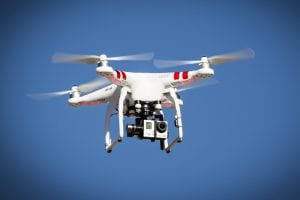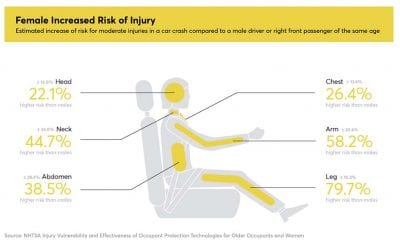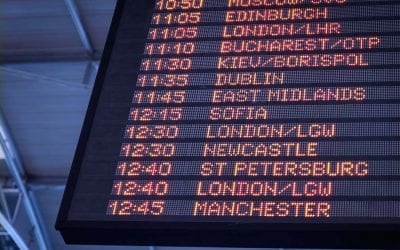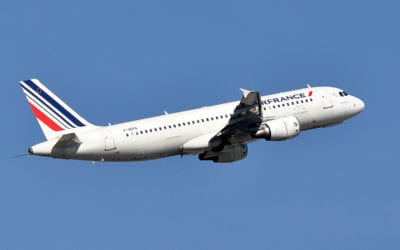U.S. commercial and general aviation remains vulnerable to drone misuse

A United Airlines pilot said, “We missed the drone by about 30 feet off our right wing.”
The temporary ground-stop affected more than 40 flights headed to Newark, including some that were diverted. Many flights waiting to depart were delayed. After the ground-stop was lifted, dozens of flights were delayed because congestion at Newark continued.
The Newark drone (UAS, unmanned aerial system) incident closely followed a far more disruptive event at London’s Gatwick Airport last December. Over the almost 36 hours of the Gatwick shutdown due to drone activity, more than 140,000 passengers and about 1,000 flights were affected.
No one knows if the UAS airport intrusions at Newark and London were deliberate, but drone incursions in or near restricted airspace are giving the U.S. commercial aviation industry serious concern.
According to a U.S. Government Accountability Office report, from February 2014 through April 2018, the FAA collected more than six thousand reports of potentially unsafe drone use sightings, a large majority of which came from pilots. With U.S. UAS ownership surpassing one million registered drones, an increase in unsafe drone use can be expected.
According to a 2017 study by the FAA’s Center of Excellence for UAS Research, which compared the collision impacts on planes from similarly sized drones and birds, “UAS impacts are likely to cause more damage than bird strikes…”
The study also discussed an increased risk of fire from drones’ Lithium-Polymer (LiPo) batteries in the event of a collision with an airplane. Considering the increasing number of potentially unsafe drone use incidents, potential impact damage and the increased risk of fire from drone collisions, even without considering the potential of a terrorist strapping an explosive to a drone, it’s easy to understand aviation industry fears about drone misuse.
Drone manufacturers are attempting to help stop unsafe UAS use through geofencing technology. Its built-in software is designed to prevent drones from taking-off or flying within airport no-fly zones and other restricted areas, plus limit drones from flying beyond federal drone flight restrictions. Unfortunately, at this time, many drones don’t have geofencing technology. In addition, while the average drone operator doesn’t have the ability to defeat geofencing, skilled hackers can disable it.
For airport use, there are two major types of technology to counter drones: detectors and defenders. Detectors include radar, radio receivers, etc. Defenders include jammers, sonic wave emitters, lasers, high energy microwaves, projectiles, etc.
Some of these technologies have been successfully used by the military, but domestically, when tested for the FAA, they’ve had many problems.
You may also like: Unmanned aerial systems in US airspace need drone controls
Radar lost drones when they hovered and had numerous false sightings. The saturation level of radio broadcasting around airports made it hard to intercept drone transmissions. Jamming can have serious unintended consequences, plus drones that are internally pre-programmed with a flight path before take-off have no radio signal to detect and are immune to jamming. The use of projectiles or lasers to destroy drones can harm bystanders and damage nearby property. Many potential defensive technologies can adversely affect more than the intended UAS target.
Cost is a problem, too. To be successful, airports would have to implement multiple and redundant technologies. At the pace of drone technology advances, strategies and equipment put in place today will need significant and sometimes rapid updates over time.
In addition to technological problems, there are legal issues in the U.S. for those countering drone incursions into restricted commercial and general aviation airspace.
In 2016, Congress passed the National Defense Authorization Act of 2017 and updated it in 2017. In the FAA Reauthorization Act of 2018 the Department of Homeland Security, the Department of Justice and the U.S. Coast Guard were given counter-UAS authority, and the FAA was directed to streamline deployment of counter-UAS technology.
More on Travelers United: Unmanned aerial systems in US airspace — what do we need?
That is supposed to allow airports to stop drone interference, but experts say the legalities of stopping drones continue to be cloudy.
For example, the U.S. has numerous laws prohibiting radio jamming and liability for damages when using such equipment. While the U.S. government is exempt, state and local authorities who run the nation’s airports don’t appear to be. If an airport uses a jammer that causes legally operated drones outside of restricted airspace to fall from the sky, injuring people and damaging property, it appears the airport authority would be legally liable for the injuries and damage. Some want to make airports exempt, but I question if that’s in the best interests of the American public.
Jurisdictional authority for state and local governments is also a potential problem for airport authorities, at this time.
The problem of drones in U.S. airspace for commercial and general aviation is real and serious. There are significant technological and legal obstacles to counter drones. Congress and the Trump Administration must move quickly to make U.S. airspace safe from drone misuse, ensure the public isn’t harmed by counter-UAS actions and hold those who take such actions accountable if the public is harmed.
After many years working in corporate America as a chemical engineer, executive and eventually CFO of a multinational manufacturer, Ned founded a tech consulting company and later restarted NSL Photography, his photography business. Before entering the corporate world, Ned worked as a Public Health Engineer for the Philadelphia Department of Public Health. As a well known corporate, travel and wildlife photographer, Ned travels the world writing about travel and photography, as well as running photography workshops, seminars and photowalks. Visit Ned’s Photography Blog and Galleries.



